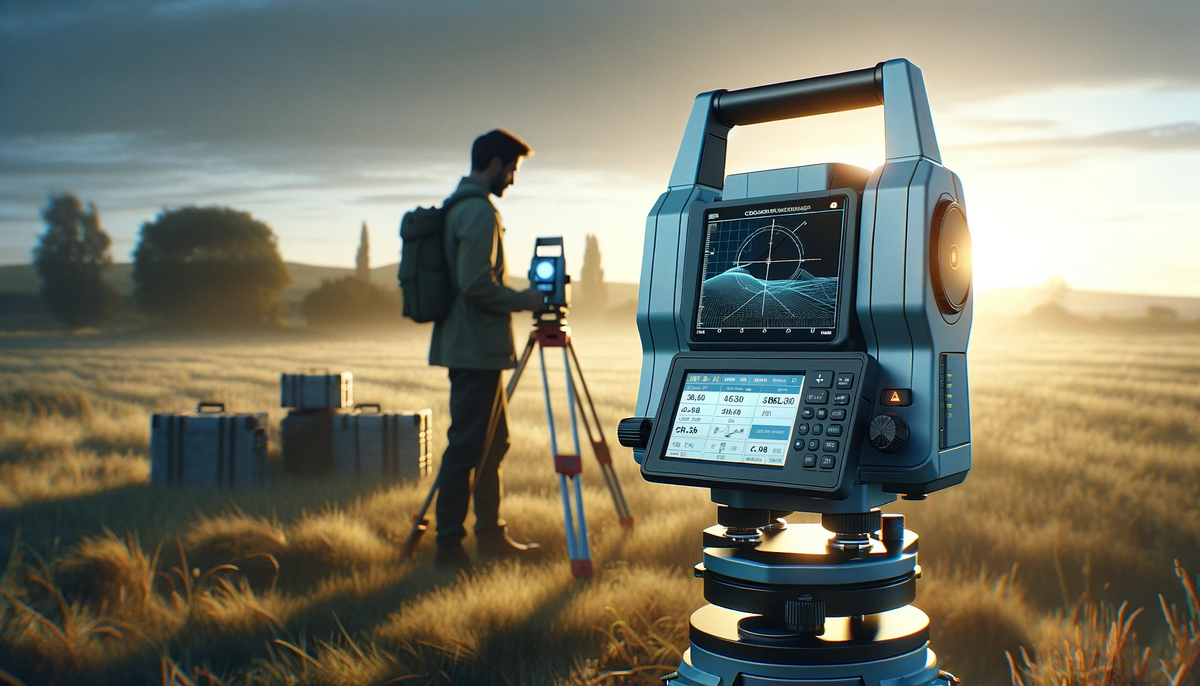The Evolution of Surveying Technology
Surveying has always been crucial in construction, engineering, and land development. From ancient civilizations using primitive tools to measure land to the introduction of total stations in the 20th century, the industry has seen remarkable advancements. However, nothing has transformed modern surveying quite like the robotic total station. This innovative technology redefines accuracy, efficiency, and productivity in the field.
What is a Robotic Total Station?
A robotic total station is an advanced surveying instrument that combines electronic distance measurement (EDM), an integrated computer, and robotic motorization. Unlike traditional total stations that require a two-person operation, the robotic version is designed to be controlled remotely by a single surveyor. This eliminates the need for a partner to manually adjust the instrument, reducing labour costs and improving overall efficiency.
With its high-precision tracking and automated measurements, a robotic total station significantly enhances data collection accuracy. Surveyors can control the device using a handheld controller, making gathering real-time data and adjusting measurements easier. This ability to operate solo has revolutionized surveying tasks, making them faster and more efficient than ever before.
Key Advantages of a Robotic Total Station
Increased Accuracy and Precision
One of the primary benefits of using a robotic total station is its exceptional accuracy. Traditional methods often leave room for human error, but robotic technology minimizes these risks. With built-in sensors and real-time adjustments, the device ensures that every measurement is precise. This level of accuracy is especially crucial in large-scale construction projects where even minor miscalculations can lead to costly errors.
Enhanced Efficiency and Productivity
Time is a valuable resource in any construction or engineering project. Operating the robotic total station remotely allows surveyors to complete tasks much faster than conventional equipment. Since only one person is needed to control the device, companies can allocate their workforce more effectively, leading to higher productivity and reduced operational costs.
Improved Data Collection and Storage
Modern surveying relies heavily on data collection, and a robotic total station is equipped to handle vast amounts of information. These stations can store and transfer data digitally, reducing paperwork and ensuring that information is not lost or misrecorded. Additionally, they can integrate seamlessly with other digital mapping tools, making analyzing and visualizing survey results easier.
Increased Safety for Surveyors
Surveying often requires professionals to work in challenging environments like construction sites, roadways, or rugged terrains. By using a robotic total station, surveyors can operate the equipment from a safe distance, reducing the risk of accidents. This is particularly beneficial in hazardous areas where physical presence could be dangerous.
Applications of Robotic Total Stations
Construction and Infrastructure Development
Robotic total stations are widely used in construction for site layout, foundation staking, and alignment verification tasks. Their high precision ensures that every structural element is positioned correctly, reducing the likelihood of costly rework.
Land Surveying and Mapping
Accurate land measurements are essential for property development, zoning, and boundary assessments. With a robotic total station, surveyors can collect detailed topographical data with minimal effort, making land mapping more efficient and reliable.
Road and Transportation Projects
Infrastructure projects such as highways, bridges, and railways require meticulous planning and execution. Robotic total stations assist engineers in ensuring that every aspect of the project is aligned correctly, preventing deviations that could compromise structural integrity.
Utility and Pipeline Surveys
Installing underground utilities, such as water lines and gas pipelines, demands precise measurements to avoid interference with existing infrastructure. The robotic total station is crucial in accurately ensuring that these installations follow the designated path.
The Future of Surveying with Robotic Technology
The advancement of robotic total stations is only the beginning of a more significant technological revolution in surveying. As artificial intelligence, machine learning, and automation evolve, these devices will become even more innovative and efficient. Future innovations may include enhanced real-time 3D modelling, improved cloud integration, and even autonomous surveying drones that work with robotic stations.
By improving efficiency, accuracy, and overall project outcomes, surveying professionals who embrace this technology will gain a competitive edge. As the industry continues to shift towards digital transformation, robotic total stations will remain at the forefront, shaping the future of modern surveying.
Conclusion
The introduction of the robotic total station has fundamentally changed how surveying is conducted. With its ability to increase accuracy, enhance productivity, improve safety, and streamline data collection, this technology has become an indispensable tool in construction and engineering. As advancements continue, the role of robotic surveying will only expand, making projects more efficient and cost-effective than ever before. For professionals looking to stay ahead in the field, investing in this revolutionary technology is a step toward the future of precision surveying.








/socialsamosa/media/media_files/2zHb3sGz3BcGQQrVtOoh.png)
